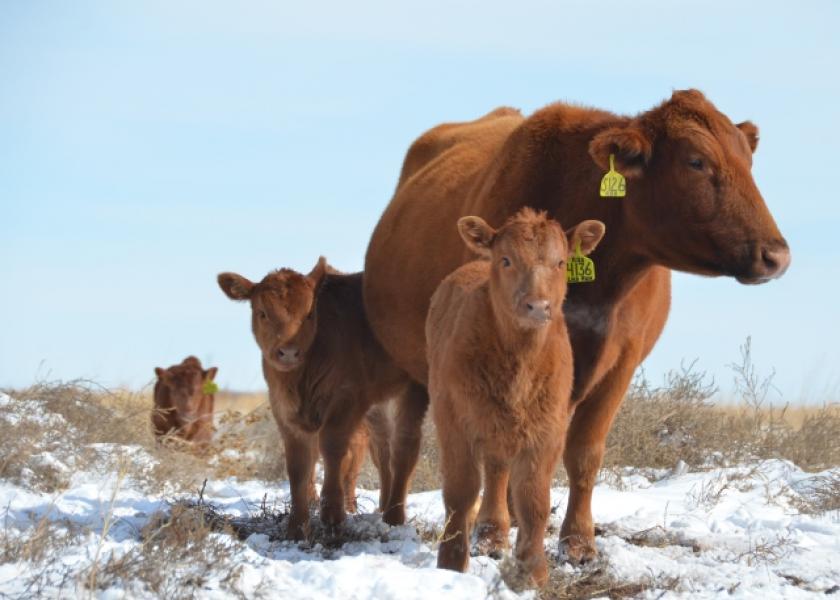Cold Weather Calves

When the weather becomes severe, calving becomes much more challenging. Calves born in extreme cold quickly utilize all body fat reserves and exposure to wind can exacerbate temperatures. Preparing in advance of inclement weather can lead to improved calf survival.
Remember to discuss your calving plan with your veterinarian and communicate well before there is a calving issue. Your veterinarian can also help you develop essentials for a calving kit.
Items to consider in your calving kit may include:
- Veterinary emergency number in cell phone
- Catch pen and functional chute
- Breeding dates and due dates with associated sire
- Calving book
- Flashlights with batteries
- Eartags with marker
- Tag applicator
- Iodine for navel
- 5-gallon bucket
- Calf puller in working order
- Obstetrical chains and handles
- Calf sled
- Syringes and needles
- Exam and obstetrical gloves
- Obstetrical lube
- Clean towels
- Straw or hay for bedding
- Thermometer
- Esophageal feeder
- Colostrum or colostrum replacer (not a colostrum supplement)
- Medications prescribed by your veterinarian such as pain medications and antimicrobials
- Halter
- Lariat
- Sorting stick
- Large trash bags
- Disinfectants
Assess body temperature if a calf appears stressed. The best way to monitor a calf’s temperature is with a rectal thermometer. Inexpensive digital thermometers work well and make it easy to evaluate progress when rewarming a calf.
If a calf’s temperature falls below 100 degrees F, interventions are needed. Bring the calf indoors and out of the elements if needed. Bedding can be provided and should be deep enough to cover the calf’s legs. Empty plastic soda bottles can be filled with hot water and placed near the calf. When used appropriately, warm water baths, blankets, calf jackets, and warming boxes are all options to rewarm a calf.
Be careful not to damage the skin of the calf by either rubbing too vigorously or placing them too close to heaters. Additionally, do not to wash off the odor of amniotic fluid. This helps prevent rejection by the cow. Warm oral or intravenous fluids as advised by a veterinarian can also make a big difference but should be used with caution in calves without a suckle reflex. Once a calf is warm and has been fed colostrum, return it to its mother. Colostrum should be received within the first 6 hours of life.
Dr. Rosslyn Biggs explains what producers can do to rehabilitate cold stressed calves from March 2, 2020 on SUNUPTV. https://www.youtube.com/watch?v=WWeESnc2Nr0







